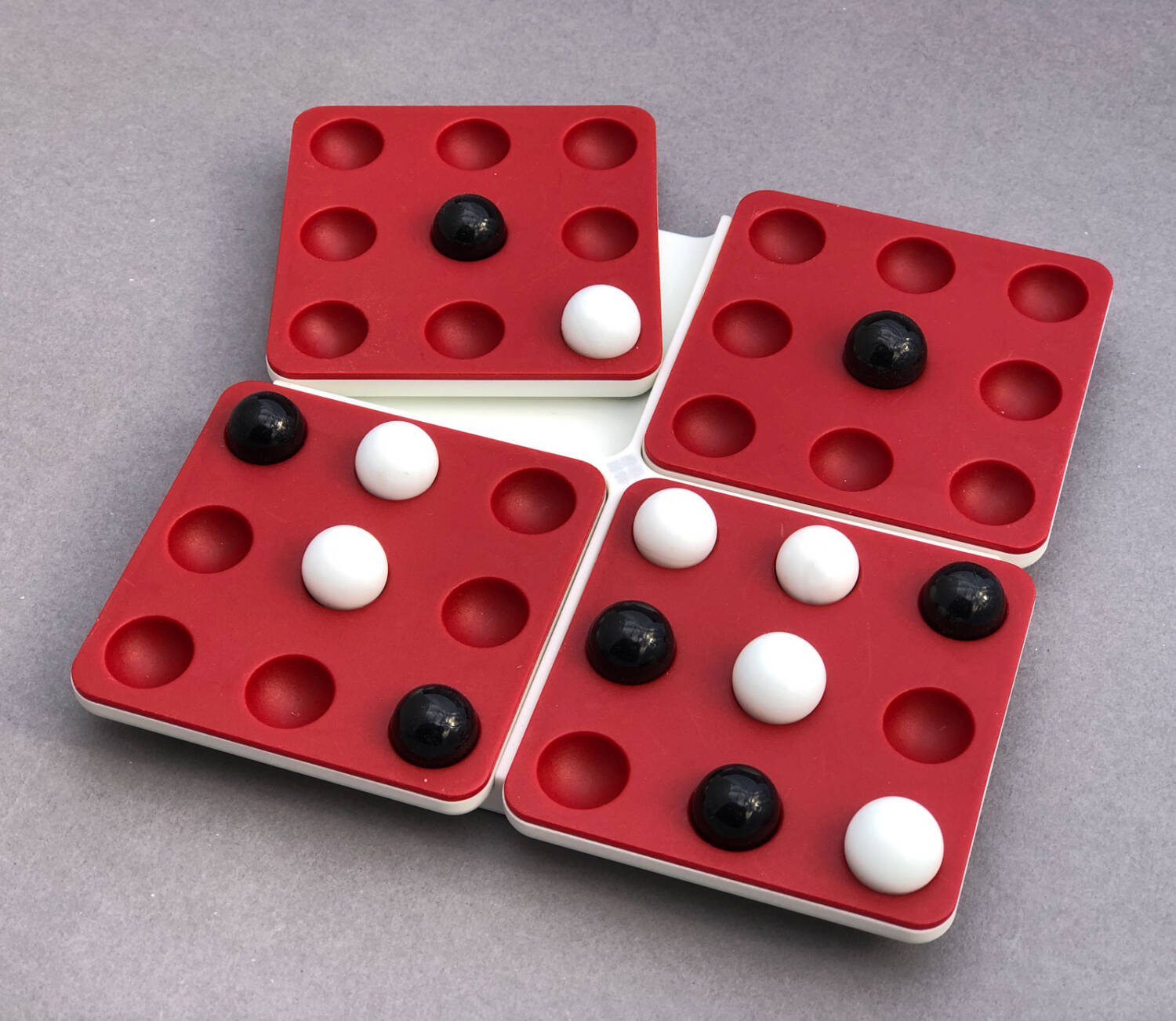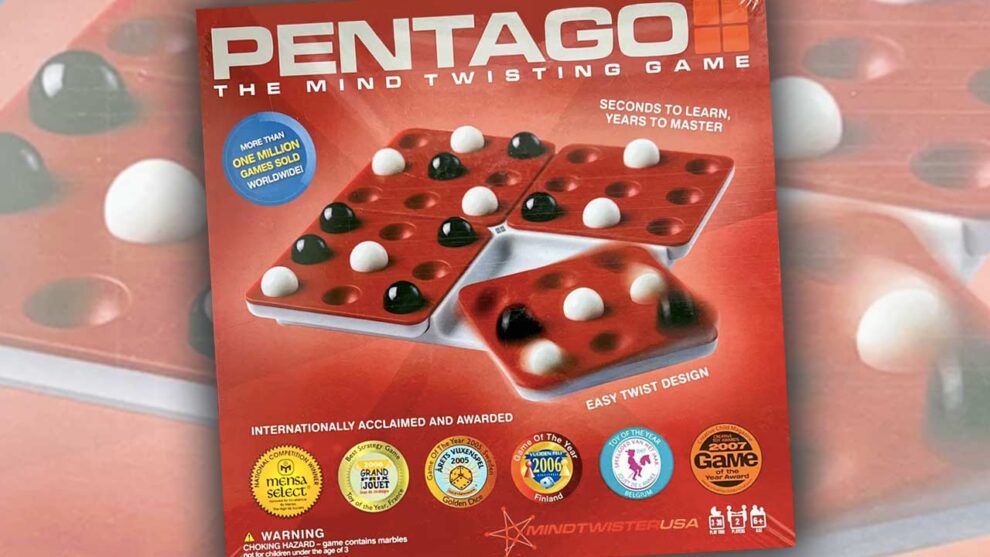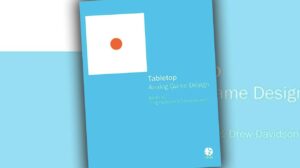Pentago is a two-player abstract created by Tomas Floden and was released in 2005. That year it won the Game of the Year in Sweden. The following year, it won the Game of the Year in both France and Finland and was a winner in the Mensa Mind Games. Not bad for such a small and unassuming game.
This is a tic-tac-toe variant, where players are trying to make a consecutive row of five marbles of your color before their opponent does. The five can be vertically, horizontally, or diagonally in a row.
The board is a six-by-six series of cupped indentations that hold marbles which are placed by either player on their turn. As well, the board is subdivided into four equal squares, each with a set of three-by-three spots.
To begin, players take all the marbles of one of two colors. On each turn, a player must (a) place a marble of their color onto an unoccupied spot on the board and then (b) turn any one of the four sections of the board 90º in either direction.
You read that right: what gives Pentago its unique twist is that you can pull each of those four sections diagonally away from the board. Once pulled away, you can then twist them either clockwise or counter-clockwise, before fitting it back in place.

In the first series of moves, the turning of one of the four sections is optional, as it won’t make much of a difference which section you turn in what direction. As the game progresses, this twisting of one of the four sections of the board becomes the most important part of the game.
This twisting not only changes the section of the board that has been turned, but the relationship the other three sections have with that rotated section. On your turn, you’ll need to consider the current board, where you’re going to place a piece, and how the board will change when you twist a section.
The trick to playing Pentago well is to learn how to set up winning combinations before your opponent. The rulebook that came with my edition of the game has examples of how to build towards each of the types of five-in-a-rows that you can make on the board. Pattern recognition is an essential strategy for the game.
Pentago also makes for an excellent game for people who haven’t played board games since they were kids. It’s a quick teach and the board-moving aspect gets their attention right away. Given that games can take only a few minutes to play, it’s easy to play many games in a row. That gives a new player time to get used to the movements of the board and the strategies needed to win.
I like bringing Pentago with me for abstract game nights. It makes for a good opening or closing game. Playing against someone who is also aware of the set-up patterns makes for a challenging time.












I have seen this one a few times in stores. I keep wondering if it is worth getting.
With your review, I may have to get this and give it a try!
Thanks for a great review.